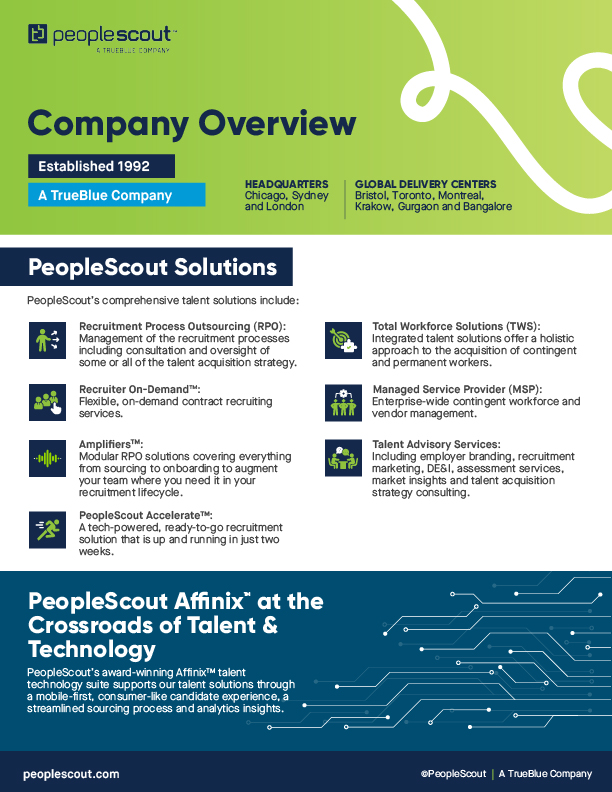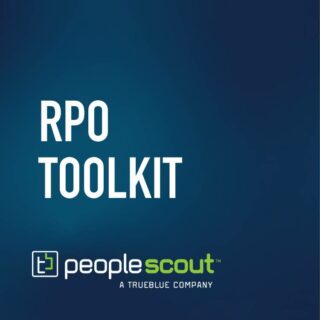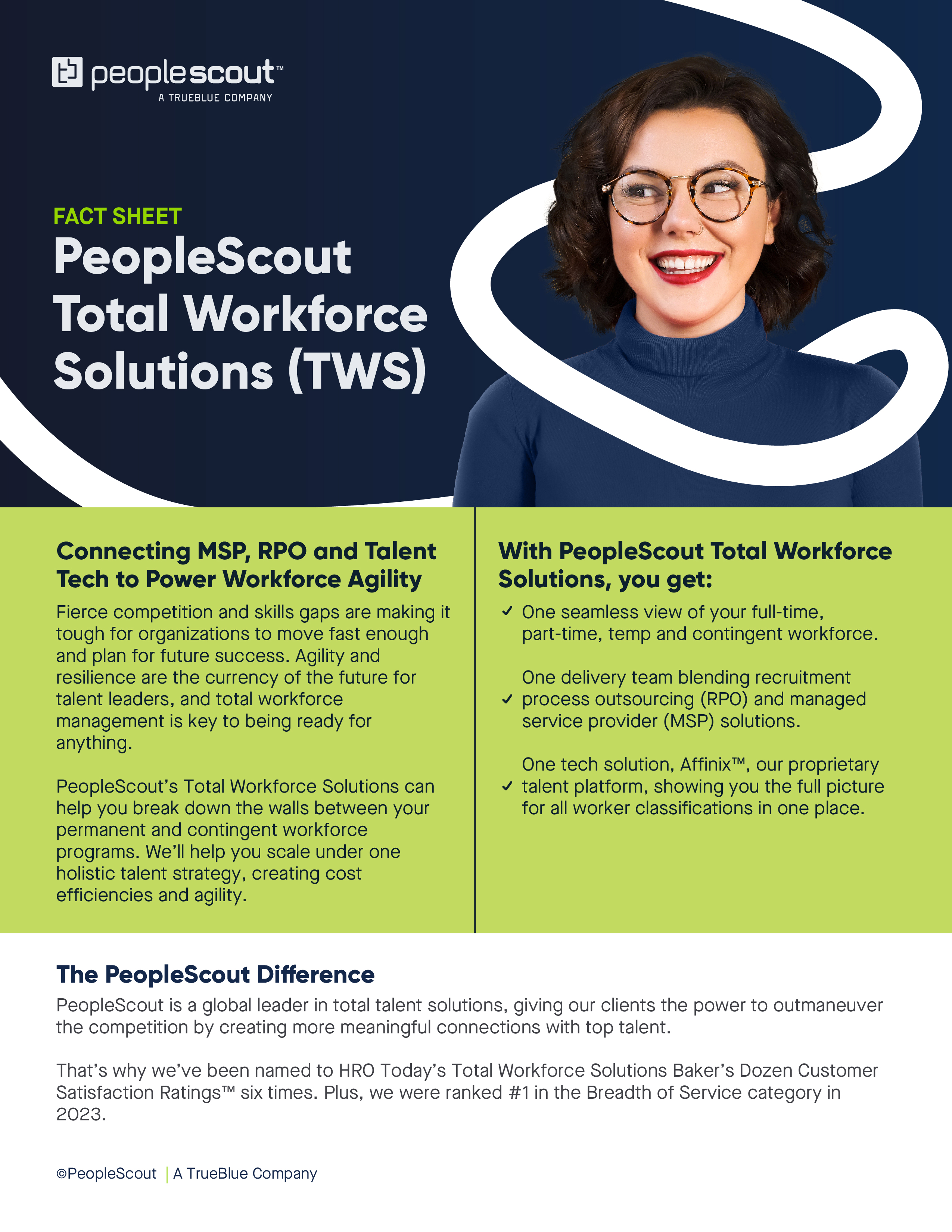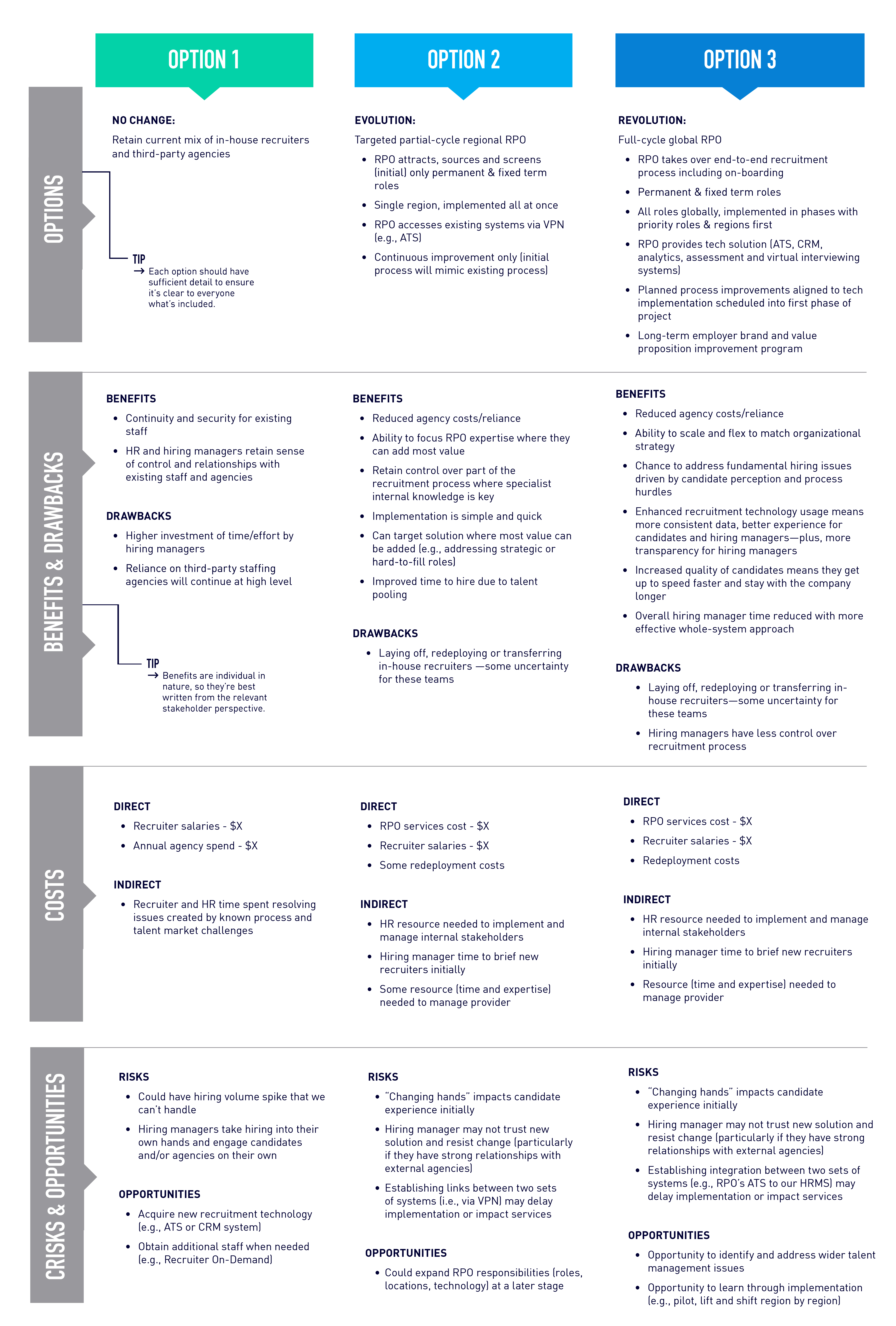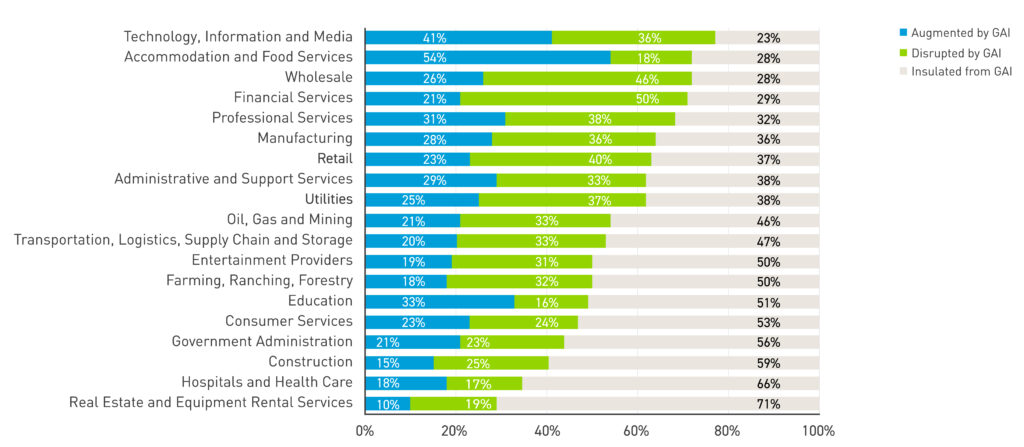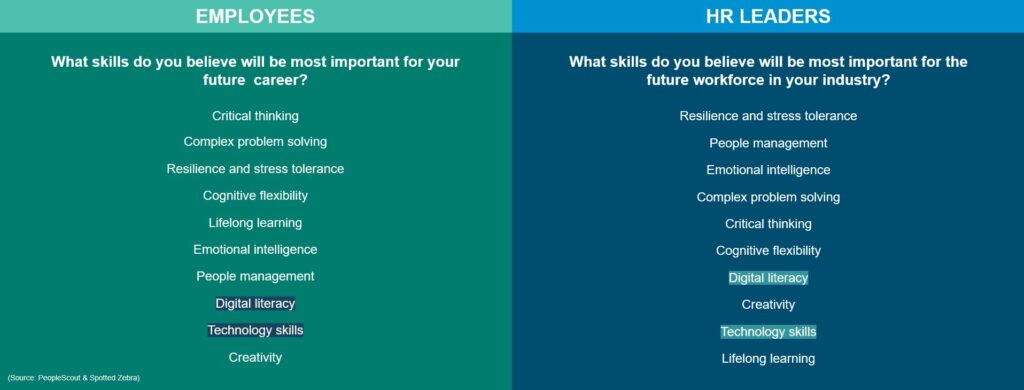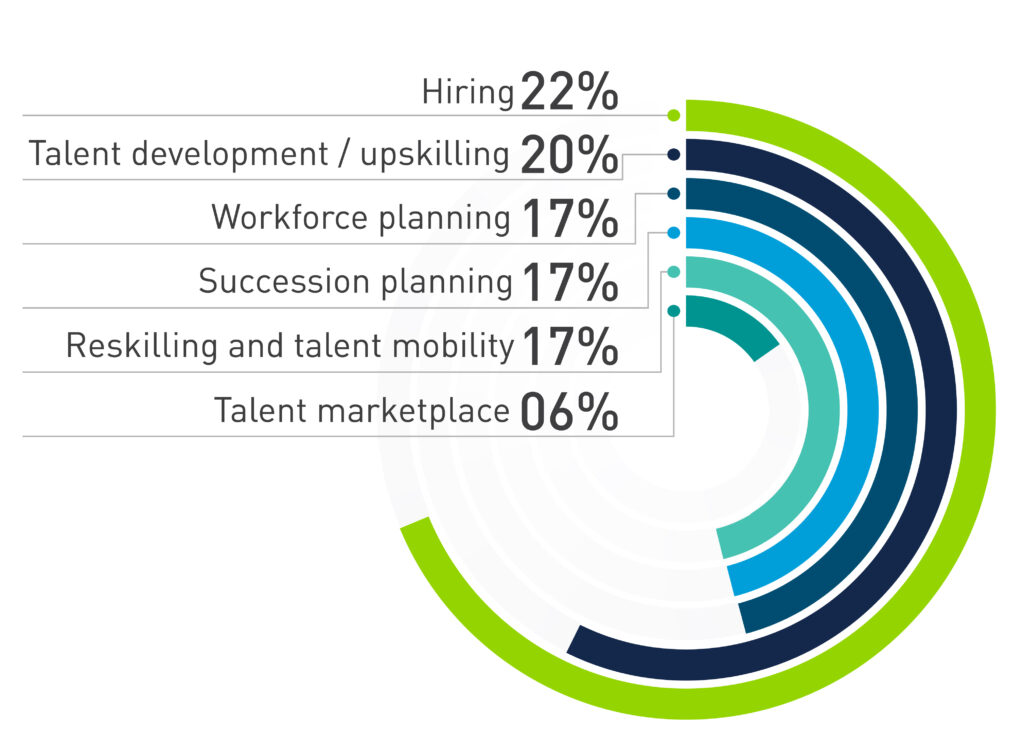The evolution of remote work has resulted in the growth of the gig economy and the blurring of lines between full-time and temporary employment. Workers who traditionally seek full-time employment are increasingly willing to take up temporary gigs—and vice versa. Organizations that create and nurture blended talent pools of both permanent and contingent workers can be more intentional with workforce planning to address skills gaps and diversity goals. Enter direct sourcing—a game-changing strategy that’s reshaping how companies approach talent acquisition.
By integrating direct sourcing into your total talent acquisition strategy, you can turn these talent pools into your strongest channel for growing your workforce, bringing forward pre-engaged talent. This results in faster hiring and improves overall organizational productivity. With direct sourcing, you can uncover hidden talent and gain a competitive edge in attracting top-tier candidates.
But what is direct sourcing, and why should talent acquisition leaders pay attention? In this article, we’ll delve into the importance of direct sourcing, it’s role in total talent management, its benefits, and the crucial role of technology in a direct sourcing solution.
What is Direct Sourcing?
First things first, what is direct sourcing anyway? Direct sourcing is a recruitment approach that leverages an organization’s employer brand and existing talent database to build and manage talent pools for both permanent and contingent positions. This method allows organizations to engage directly with potential hires, including former employees, retirees, referrals, interns, and even “silver medalists” and candidates who were runners-up in previous hiring processes. Unlike traditional methods that rely heavily on staffing agencies, direct sourcing creates a pipeline of freelance, temporary and permanent talent, reducing costs, improving hiring efficiency and allowing employers to take control of their hiring needs.
At its core, direct sourcing involves:
- Utilizing your employer brand to attract talent
- Creating and managing exclusive talent pools
- Proactively engaging with potential candidates
Direct Sourcing: The First Step to Total Talent Acquisition?
According to Everest Group, 46% of enterprises are actively exploring ways to combine approaches for contingent and permanent talent acquisition management, and 74% see direct sourcing as the way to do it. By sharing people, processes and technology across vacancy types through direct sourcing, organizations gain efficiency and get closer to total workforce management.
So, it’s no surprise that more and more organizations are choosing to outsource their direct sourcing program, either coupled with their Managed Service Program (MSP) or through a Recruitment Process Outsourcing (RPO) provider.
Partners like PeopleScout excel at direct sourcing, as their specialty lies in seamlessly integrating with client teams, leveraging the client’s employer brand to attract top talent. Plus, with a partner, you gain access to specialized technology for managing and curating talent pools, ensuring a streamlined and efficient process while still maintaining the benefits of direct engagement with potential hires.
The Benefits of Direct Sourcing
Direct sourcing offers numerous benefits that are driving its adoption among forward-thinking organizations. Let’s explore the top advantages:
- Faster Hiring Cycles: With always-on talent pools, direct sourcing can significantly reduce time-to-hire. By eliminating the need for a staffing agency and leveraging candidates who already exist in the ATS and CRM (and are familiar with your employer brand), direct sourcing puts engaged candidates at your fingertips. Having regular access to qualified candidates, referrals and former employees allows you to easily adjust to changing workforce needs.
- Greater Cost Savings: Direct sourcing can significantly reduce recruitment costs by minimizing reliance on staffing agencies and their associated fees. An RPO partner who can offer AI-powered sourcing and innovative ways to ensure smarter media spend can reduce your costs and maximize your ROI for direct sourcing.
- Higher Quality of Candidates: By leveraging your employer brand and creating curated talent pools, direct sourcing allows you to attract higher-quality candidates who are better aligned with your organization’s culture and needs. Through personalized engagement with candidates, RPO providers can gain a deeper understanding of their skills, experiences and motivations. Additionally, direct sourcing allows companies to build lasting relationships with top talent, creating a talent pool that can be tapped for future openings.
- Enhanced Candidate Experience: Direct sourcing means more personalized and human interactions, which improves the candidate experience. By engaging proactively with potential hires, you can provide a smoother, more informative process that reflects positively on your brand.
- Employer Brand Attraction: In a direct sourcing engagement, your RPO partner is an extension of your team, transforming your employer brand into a powerful tool in attracting top contingent and permanent talent. Direct sourcing allows you to showcase your company culture, values and opportunities through relevant and engaging touchpoints, helping you become an employer of choice.
- Access to Data & Insights: With extensive experience across job families and regions, RPOs are well suited to evaluate your unique recruitment metrics against market trends to enable data-driven decision making for your direct souring program. Detailed analytics help decode top talent behaviors and predict cultural fit, willingness to change companies and future tenure potential to improve hiring speed and accuracy over time.
- Improved Diversity: The targeted nature of direct sourcing means you can identify, select and engage candidates from various audiences to meet diversity goals.
- Improved Hiring Manager Experience: Direct sourcing provides hiring managers with better access to high-quality and diverse talent pools, freeing them up to focus on leading their teams instead of recruiting.
The Role of Technology in Direct Sourcing
While the concept of direct sourcing is powerful on its own, technology unlocks its true potential. Modern direct sourcing solutions leverage AI, multi-channel sourcing, communication automation and analytics to supercharge the approach.
When deciding on a direct sourcing solution, consider the following technologies:
- AI and Machine Learning: These technologies enable superior skills matching, connecting the right candidates with the right opportunities more efficiently than ever before. PeopleScout Direct Sourcing helps you rediscover candidates who are already in your applicant tracking system (ATS) with the use of AI. Affinix®, our proprietary total talent suite, compares your job description against profiles in your database and identifies a list of the best candidates—whether they’re previous applicants, individuals who have filled out an expression of interest form for the role, or silver/bronze medalists from previous requisitions. You receive a weighted role suitability score for each candidate (based on previous job titles and experience, skills profile, and management experience) along with a written summary. Your hiring manager can then determine which candidates they want to pursue immediately, and which to add to a talent pool, where they’ll receive additional outreach before being invited to apply.
- Smart Search: In addition to your existing ATS, consider a direct sourcing solution that enables you to search across multiple external talent databases—such as LinkedIn and Indeed—simultaneously and save relevant candidate profiles into your own database. This helps you beat your competitors to hard-to-find talent and source more efficiently with a seamless experience for your hiring managers. AI can be applied to these candidates as well to identify strong candidates—passive or active, known or new to you—within seconds of opening a new job requisition.
- Multi-Channel Sourcing: To truly capitalize on your employer brand with your direct sourcing program, a multi-channel approach that leverages recruitment marketing to reach top talent is crucial. This includes custom career site and microsite development, for both internal and external job portals, expression of interest forms and programmatic advertising. This holistic approach will re-engage talent and excite them about your opportunities.
- Personalization at Scale: Your direct sourcing solution should feature recruitment marketing technology that helps you develop a series of automated targeted communication touchpoints to engage or re-engage with passive candidates, silver/bronze medalists, contractors, alumni and referrals. Personalized emails and automated drip campaigns will keep your brand top-of-mind. Use analytics from communication and nurture campaigns to access insight into which candidates are engaging most with your content and whether the content you’re distributing resonates with the candidate pool.
- Data-Driven Insights: For your direct sourcing program, insist on robust reporting and analytics capabilities. However, according to Everest Group, 52% of organizations who are considering direct sourcing cite the lack of technology integration between permanent and contingent tools as a challenge they are currently facing or anticipate facing. Integrating your existing VMS and ATS into one analytics platform is a must for total talent management in order to gain insight into both your permanent and contingent openings.
Conclusion
As the world of work continues to evolve, direct sourcing is poised to play an increasingly important role for organizations aiming to streamline their total talent acquisition processes and attract the best candidates.
As you consider implementing direct sourcing in your organization, remember that while the human touch remains invaluable, technology is a crucial enabler. Industry leading direct sourcing solutions are AI-powered, combining cutting-edge technology with expert talent curation and engagement strategies.
By embracing this approach, organizations can position themselves at the forefront of talent acquisition innovation, ready to attract and engage the best contingent and permanent talent in an increasingly competitive landscape.

